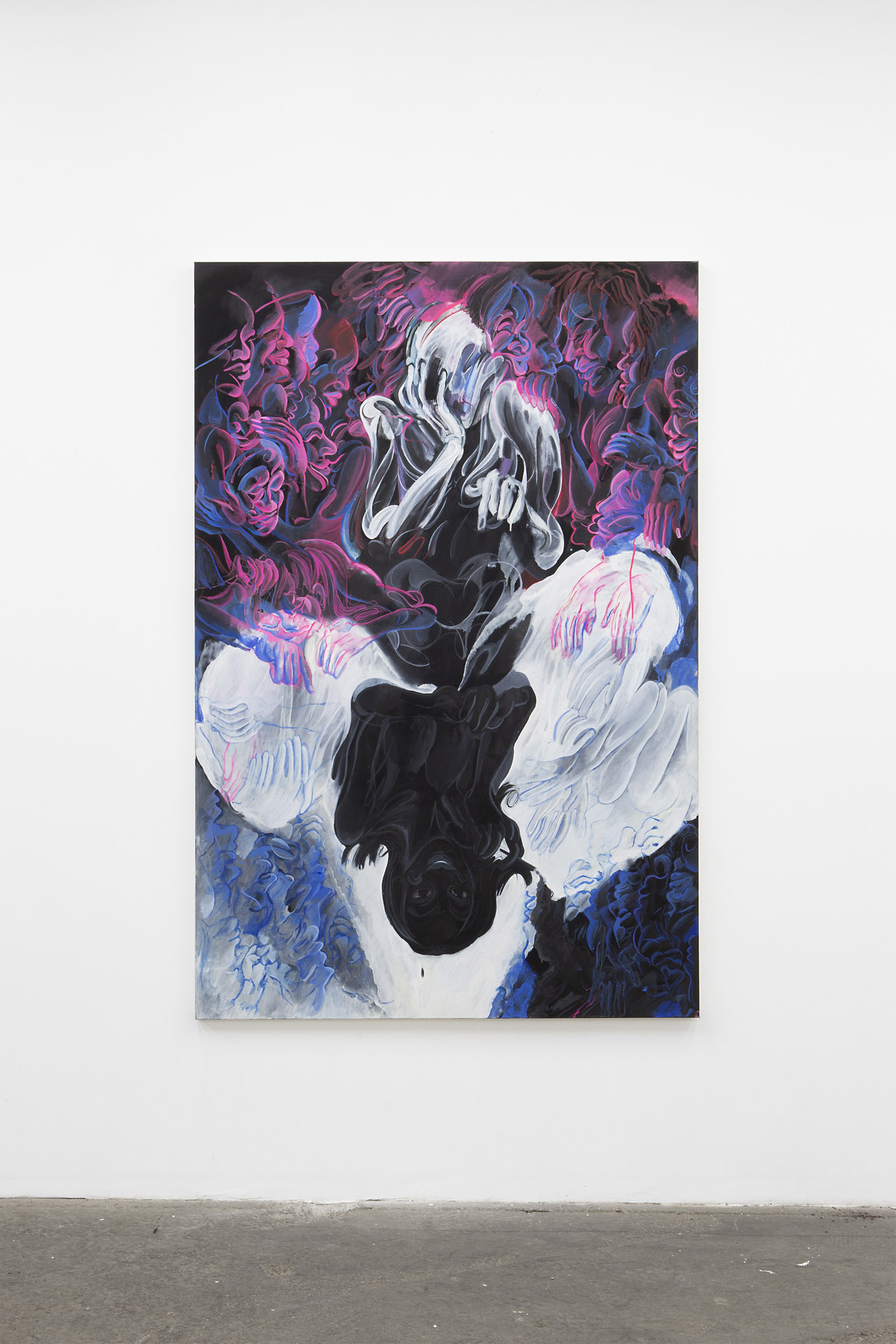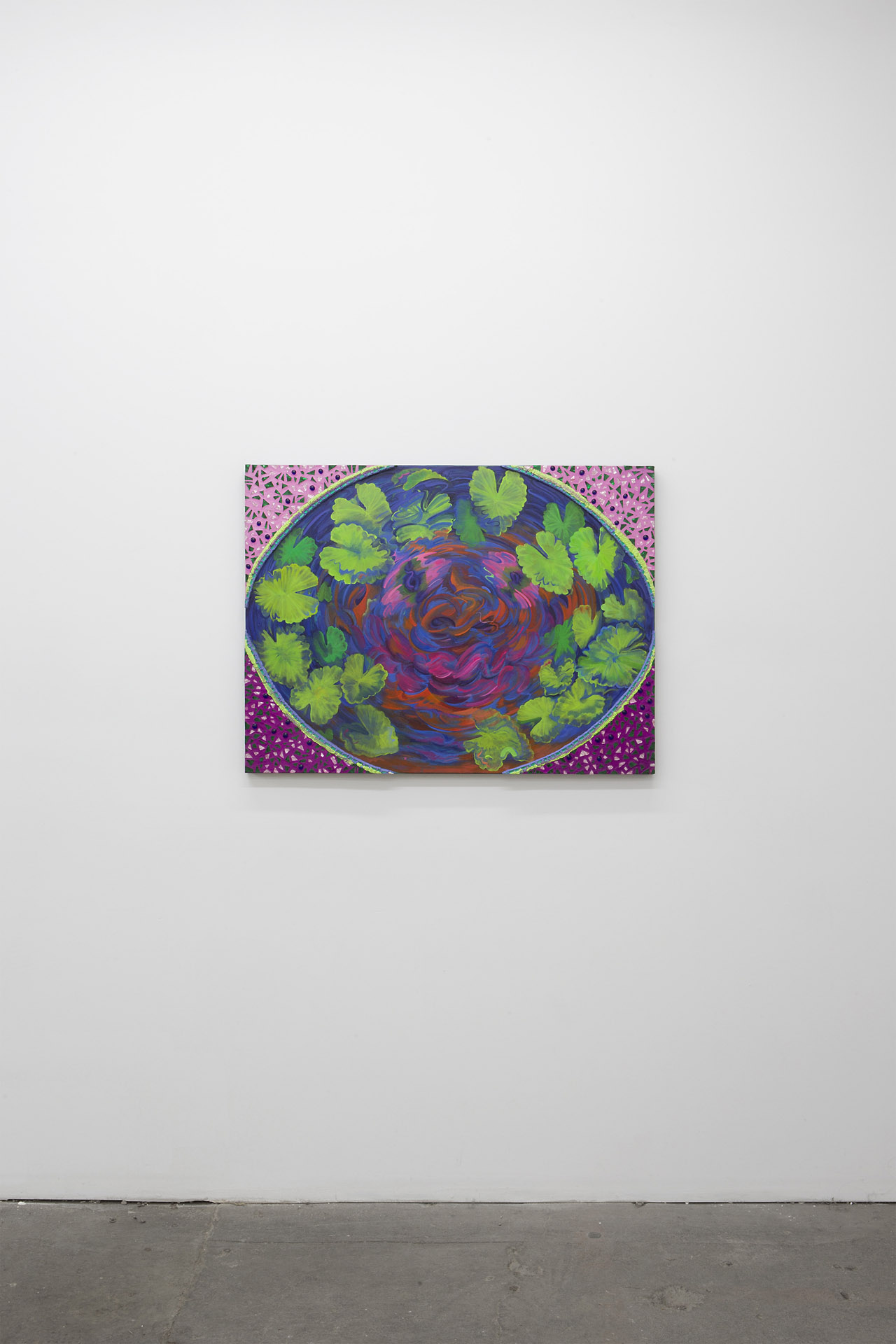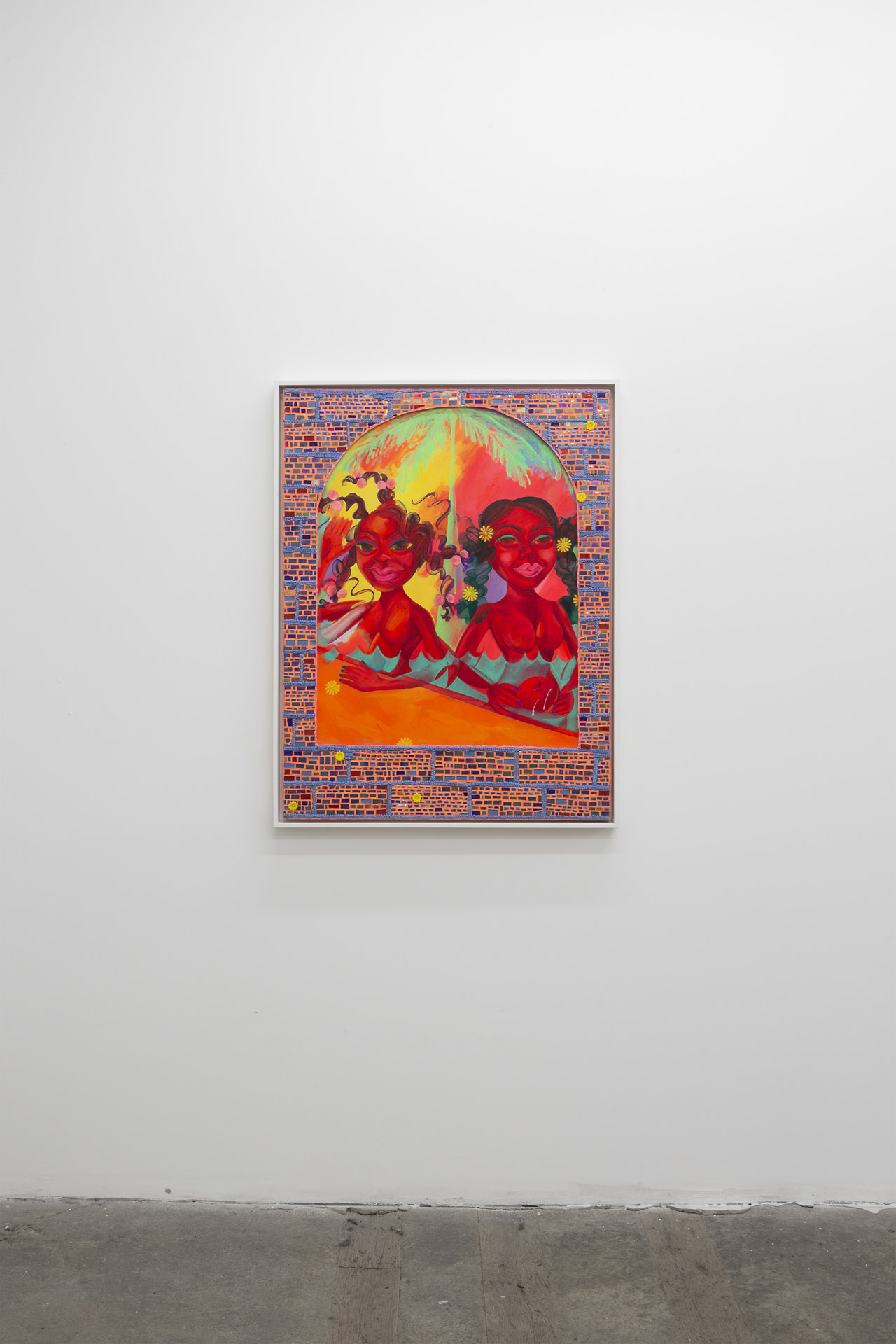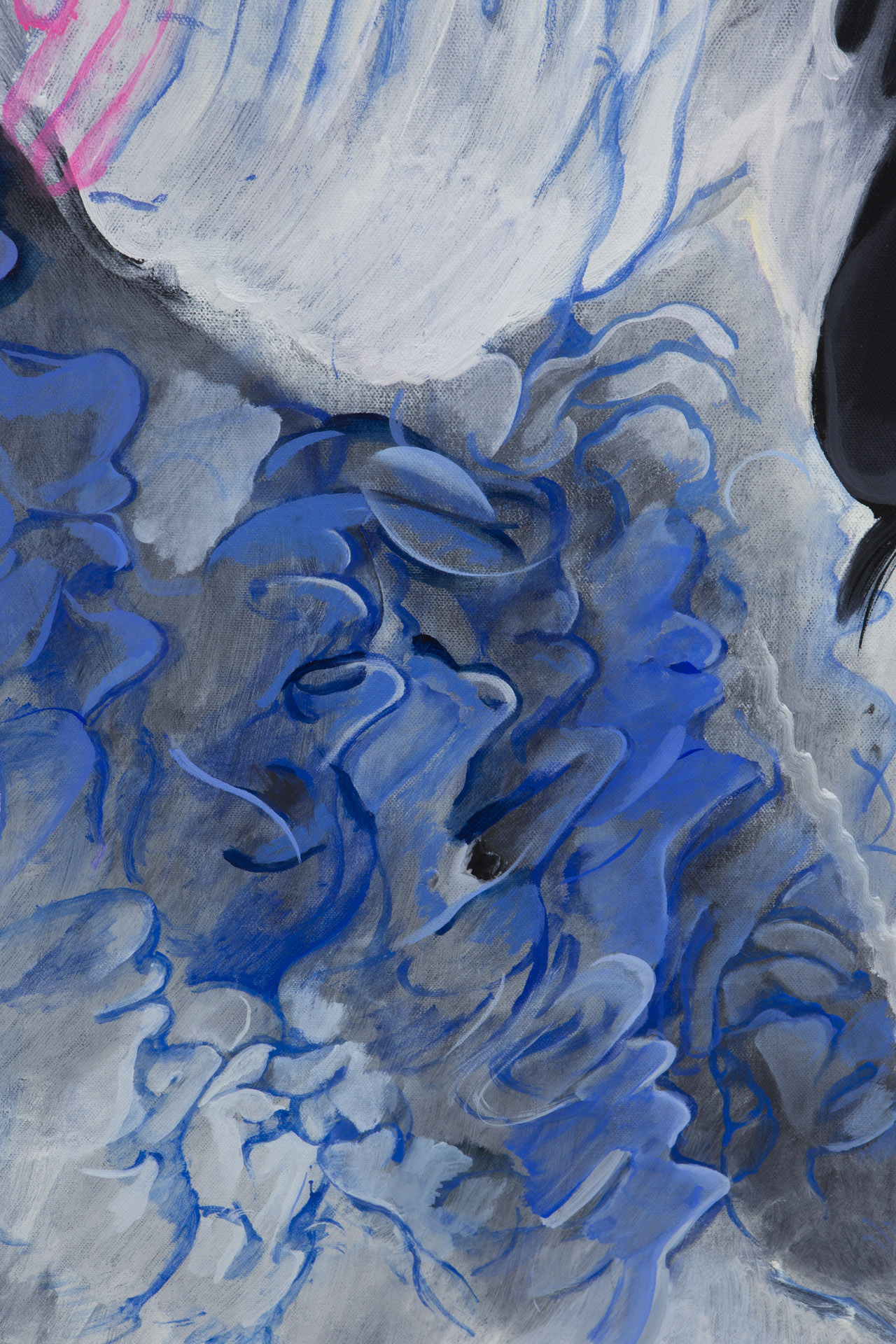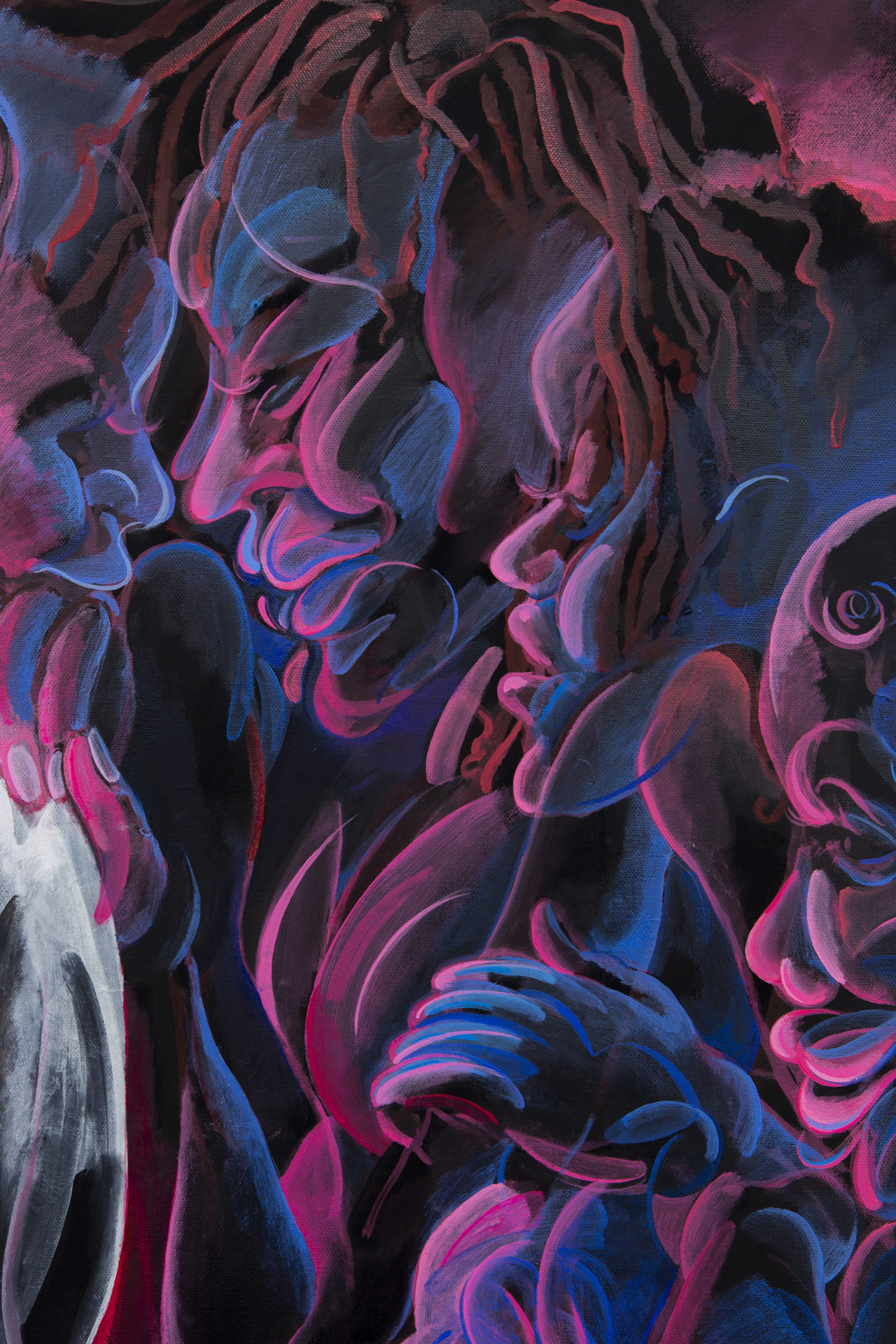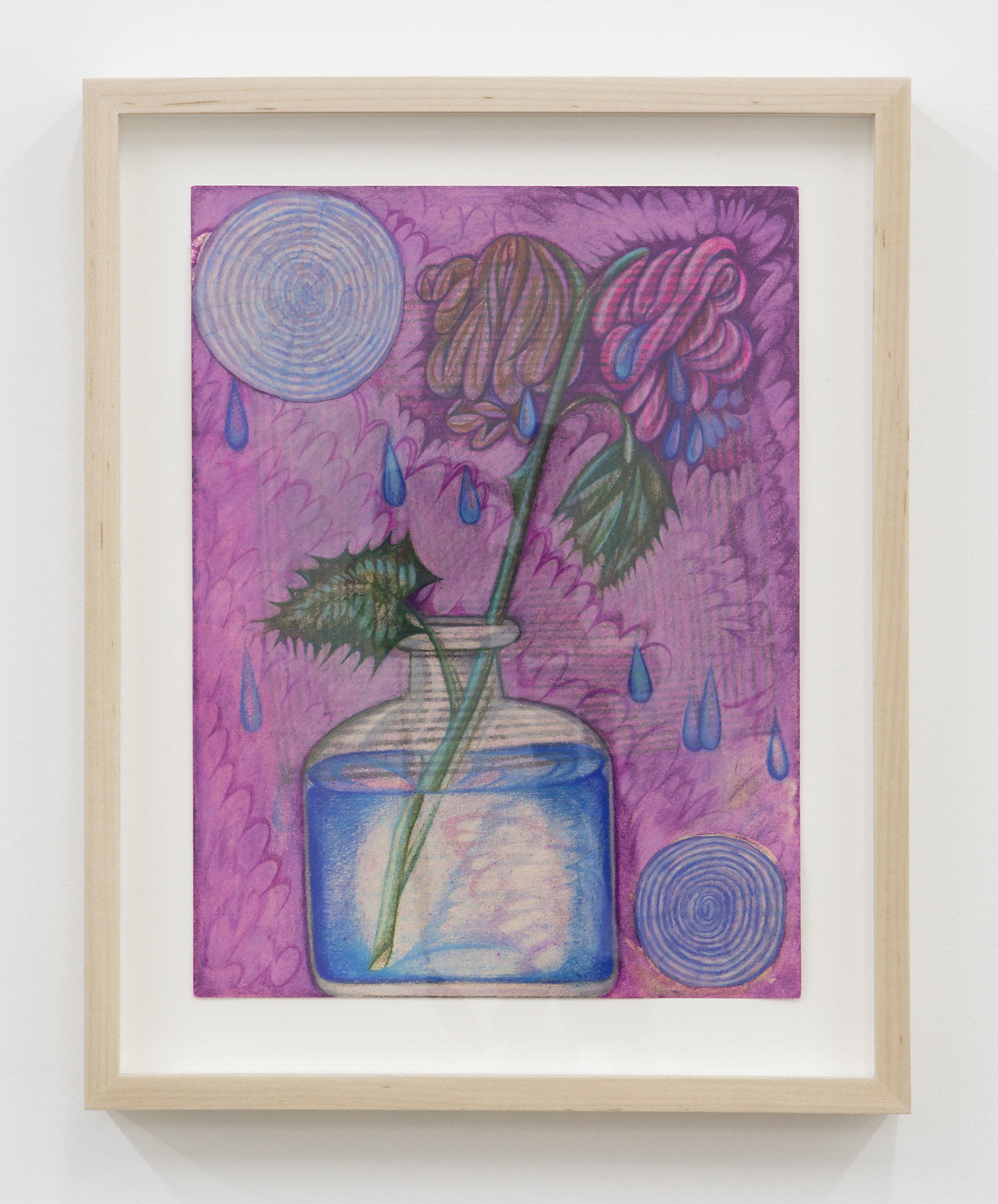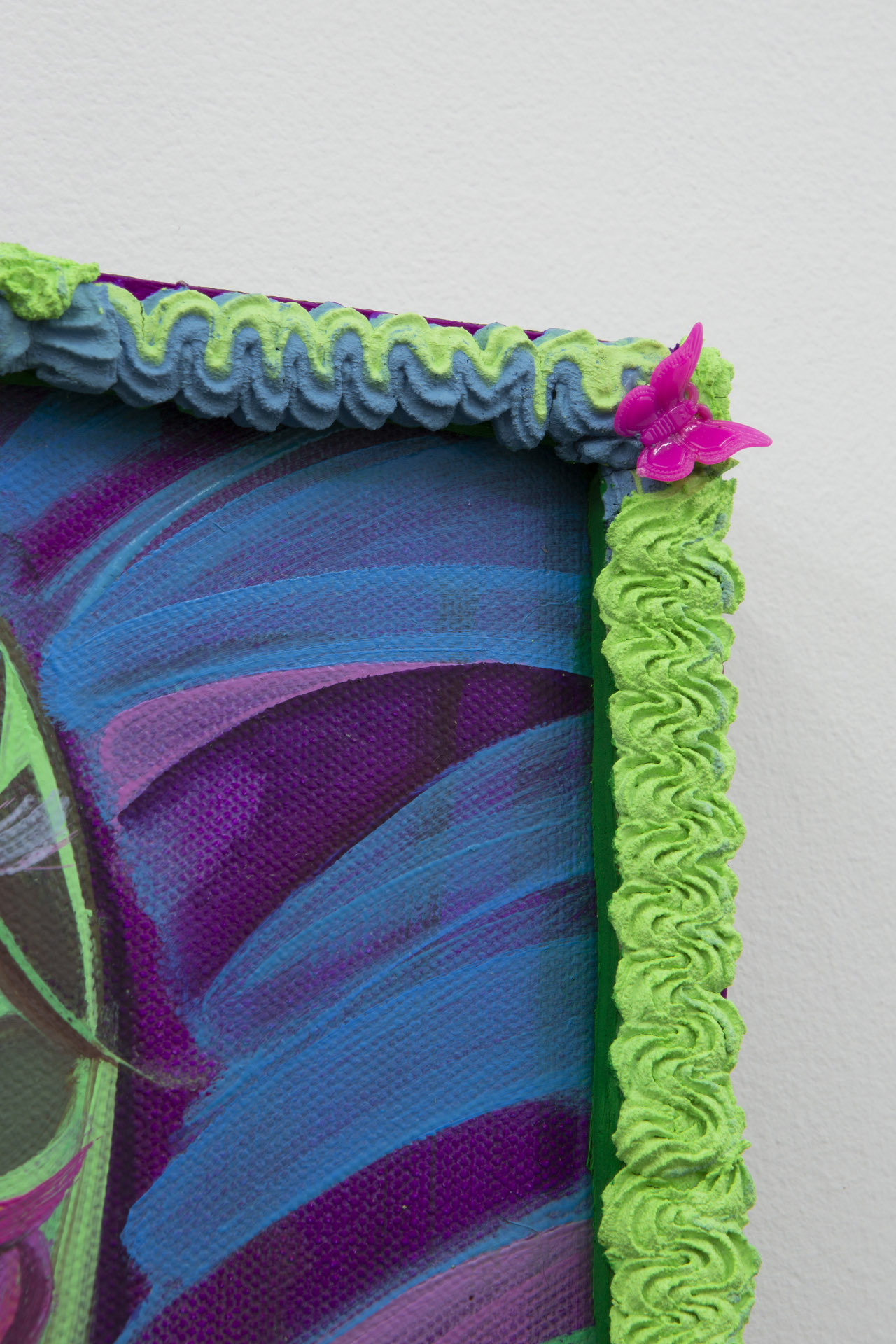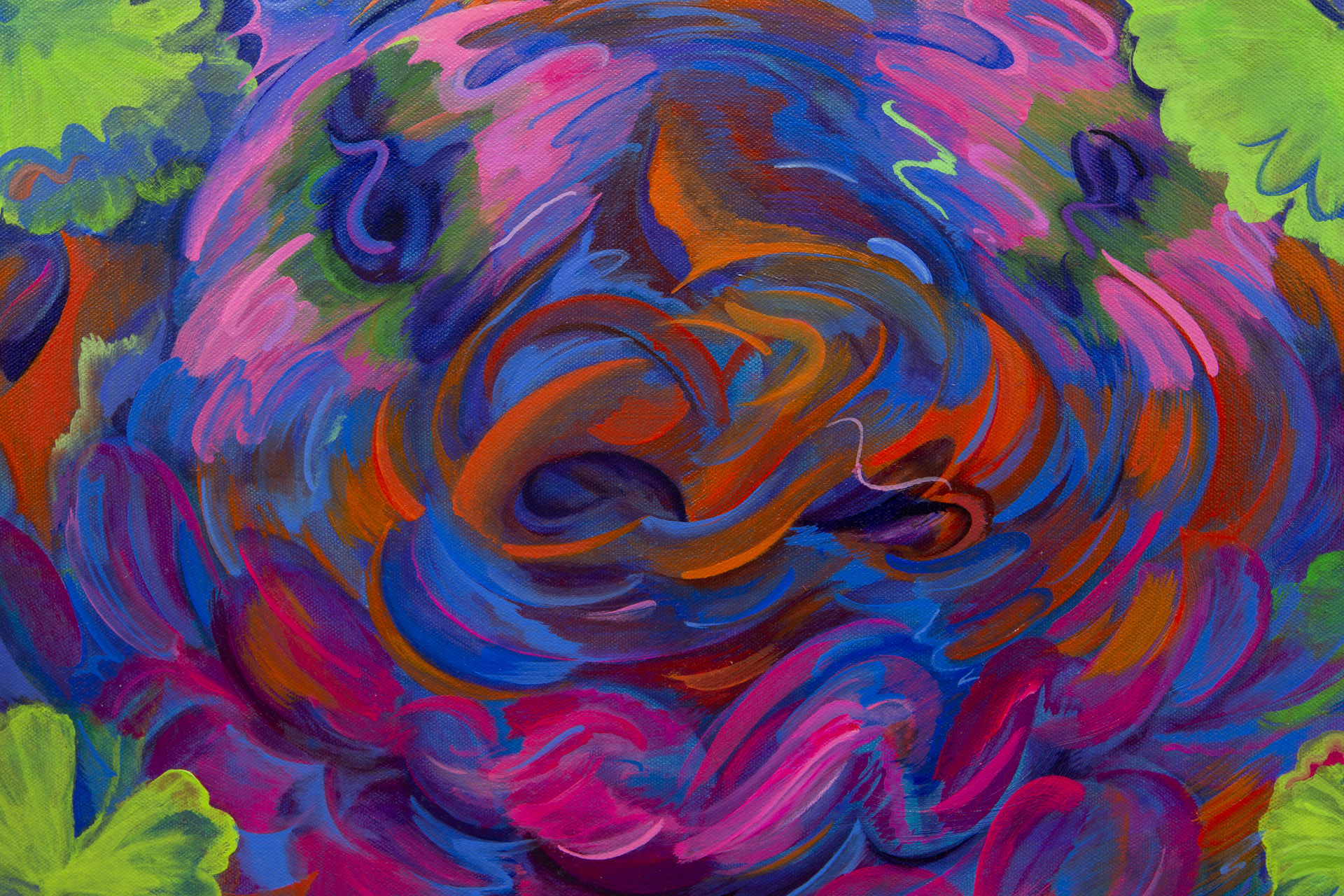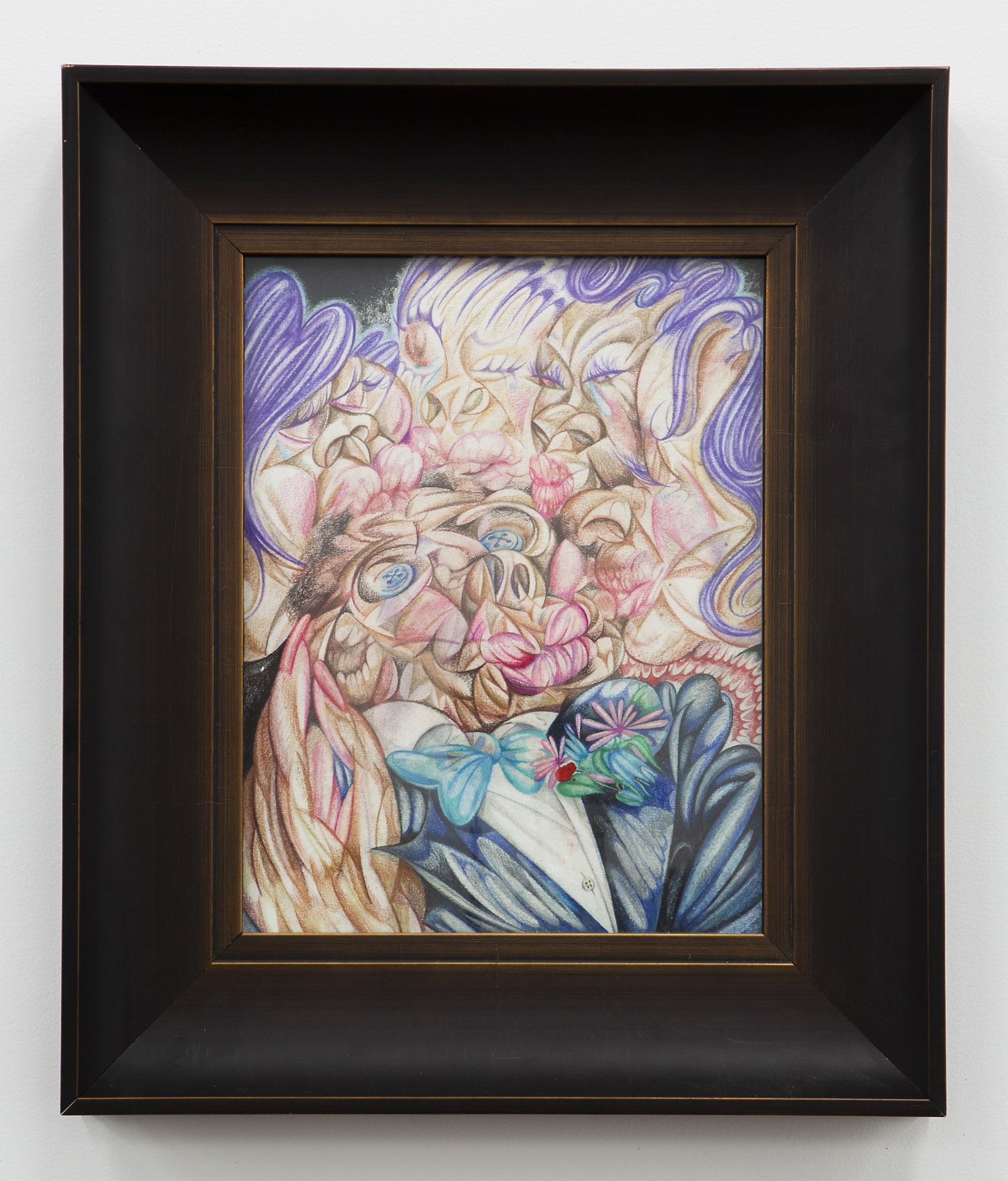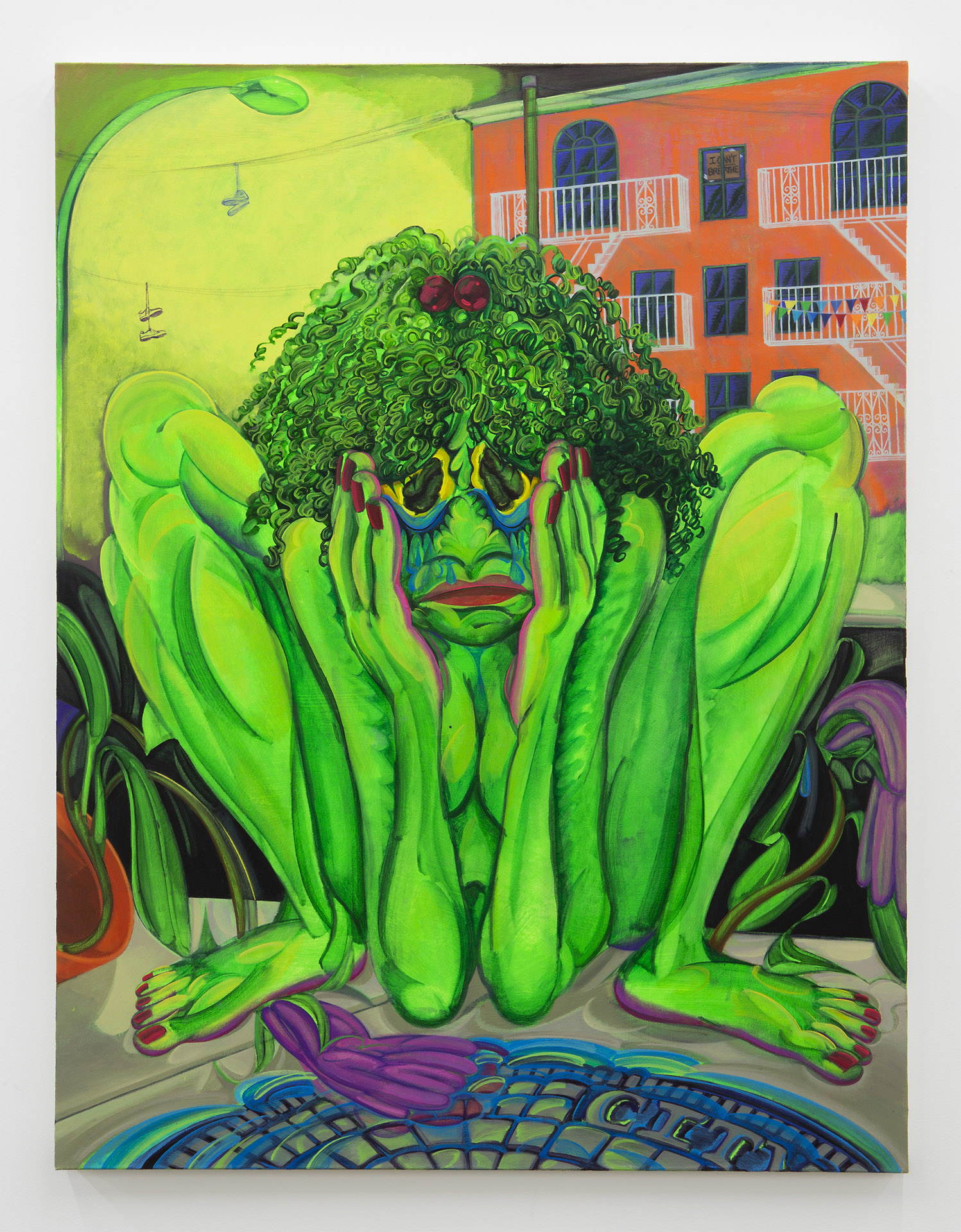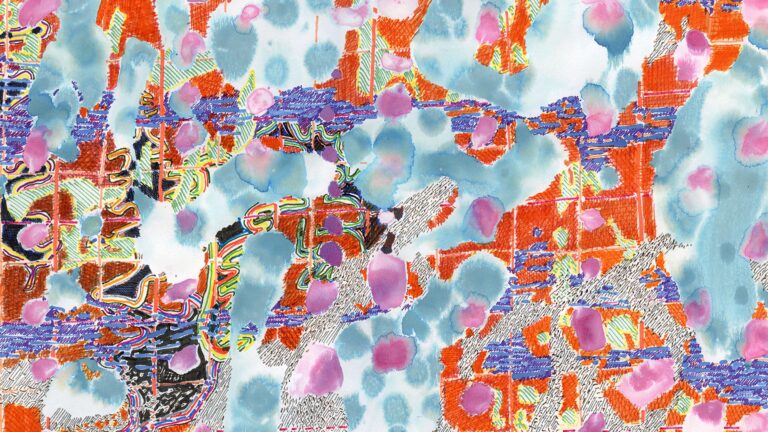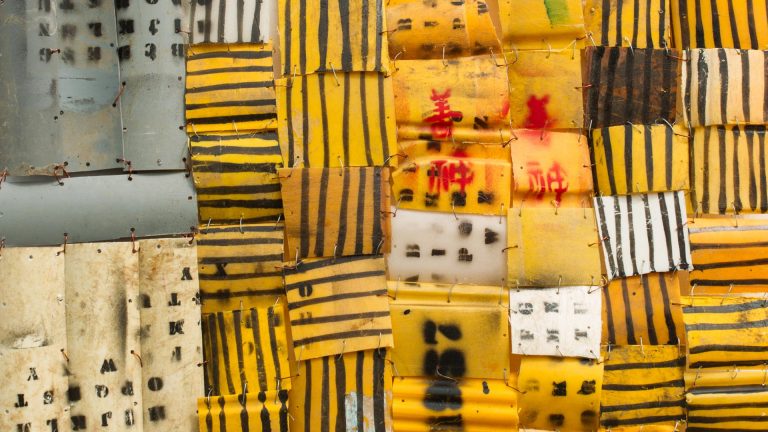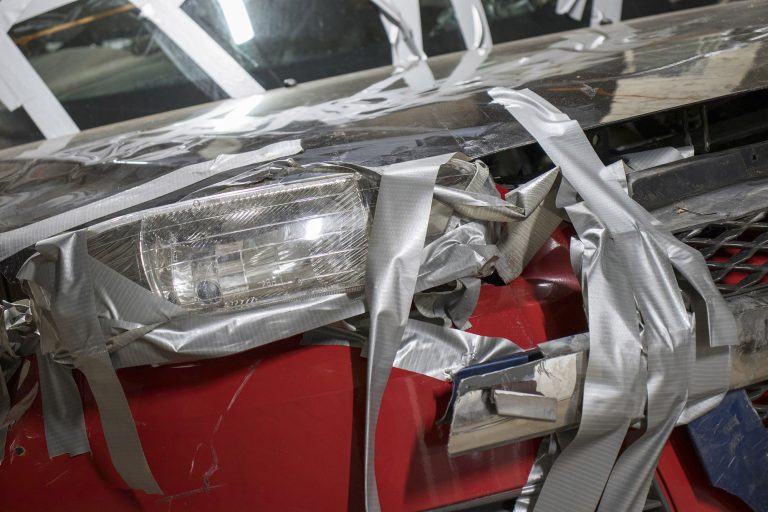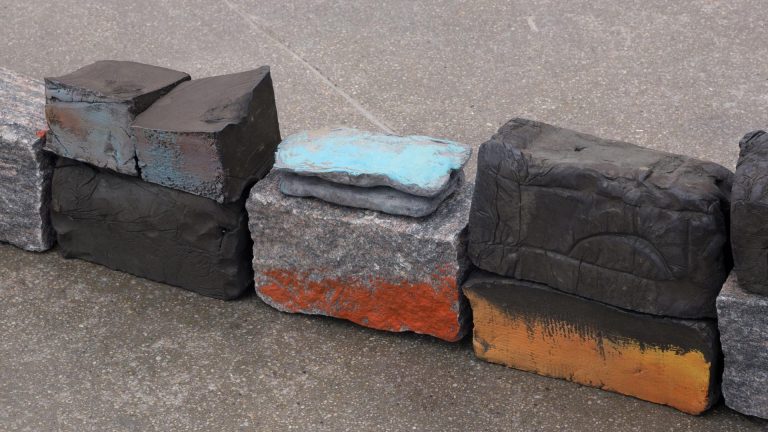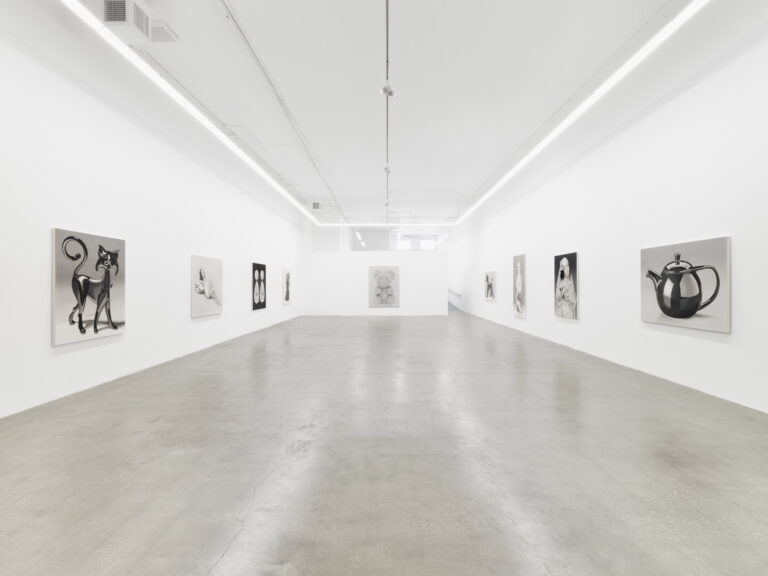Artist: Skye Volmar
Exhibition title: flower, child
Curated by: Brianna Rose Brooks
Venue: Deli Gallery, New York, US
Date: February 5 – March 21, 2021
Photography: all images copyright and courtesy of the artist and Deli Gallery, New York
Brianna Rose Brooks: As an entry point I’d love to start by talking about the title of the show, “flower, child” and where it came from?
Skye Volmar: Mmm. Yes. The origin story. Last year, I considered cultural, emotional, literal, and personal perspectives regarding the concept of deflowering. Initially, I thought of calling the show “Flower Girl”. A flower girl is a prepubescent female, with a basket of petals and white dress. She is assigned to walk, while petal tossing, before an audience of wedding attendees. She symbolizes the coming of adulthood, which is the creation of womanhood through deflowered girls.
The title moved from “Flower Girl”, to “flower, child” as I unpacked my experience of girlhood. I was a black girl. Black girlhood means adultification, hypermasculinization, hypersexualization, and hypervisibility in a predominantly white country whose culture writ large reflects white supremacy. Historically, my black signifies the social death of slaveness. Black folks were not permitted gender, for to have gender, was to have gender roles, was to participate in civil society. The “Flower Girl” framework communicates a complicated history of women and girls as decorative sex objects, or non sentient beings like flowers. However, it fails to communicate the social death of black girls and their distinction/exclusion from gender norms. For this reason, I came to call the show flower, child. I like that a comma compartmentalizes flowers from children and vice versa. Additionally, it suggests a list of living things or a command.
There is an overarching theme of reflection in the work. Both in that it was generated in reflection of adolescent memory and then in conjuring the story of Narcissus, who falls in love with his own reflection. Also in ‘Echo’… which becomes a portal… this sort of invites one to jump in and out of and through time and place. Can you reflect on this element and its significance to the work?
Reflection is the ancestral root of flower, child’s evolutionary tree. At best, my work implicates the viewer in its construction. When painting, I simply prepare a surface for reflection- the rest is a mix of perception and projection.
In my adolescence, I felt Echo and Narcissus as an exceptionally unfortunate story of romance and unrequited love. Much ado about the glamorization of toxic relationships, specifically in teen media. I pictured them the perfect pair: Echo’s limited language compatible with Narcissus’ desire to see and hear himself. As an adult, I wonder: How did Echo feel when others heard her voice (and mind) as no more than their own? Was her voice a mirror or was it a reflection? How did she hear herself? How did she see herself? If she looked to Narcissus, with all his arrogance and ego, and saw beauty…how did she see herself? In death, he is a daffodil, what flower becomes of her? What if she looks for his face in the pond, only to find herself reflected in his absence?
There are some recurring feminine symbols, like the flower, butterflies and butterfly barrettes and the gendered affection in the title “Frog Princess” that embody a narrative of black girlhood. The scenes you depict feel both personal and collective. Can you talk about your intent behind the use of these symbols? How do they relate to the people and emotional states you’re representing?
Ah yes! Blackness birthed an assortment of Black feminine accoutrement- including the beads, bobos, braids, butterfly and flower barrettes featured in my work. The aesthetic is both widely accessible and autobiographical. As such, it’s a meaningful allegory for black femininity. Black girls are dealt a one-two punch of adultification and masculinization; their bodies are heavily policed. Hyperfeminine accessories are maybe a loving attempt to remedy the issue. I love the gaudiness, the girlish adornment, but what if you don’t? What alternative is there, when black girls are subject to danger, should they appear too “grown”.
“Frog Princess” is an adolescent self-portrait in which a girl with a grown woman’s body glows green with envy, like a manmade mutant. A not-so-subtle nod to Tiana, the first black Disney princess in 2009’s The Princess and the Frog. A frog prince comes along and promises her everything. She kisses him and turns into a frog. The movie is 98 minutes long- she appears in it for about 40 minutes, and she spends 23 of those minutes personified as a frog. Many nights, I felt like the frog princess, wishing for my royal kiss. I wanted someone to lift me from working class conditions into safety and financial security. So, my Frog Princess sits on the sidewalk pondering her prince with a big pout.
Anyways, it’s not all angsty, hopeless, passive, or reactionary… there’s plenty within my work that is joyful and celebratory. I spend a lot of time thinking about the energetic beauty, creativity, imagination, and innovation of black femininity. Everything was made with admiration, care, and love for Black folks who survive the complex trauma of black girlhood.
Where would you situate your own experience within the work?
Introspection is integral to my practice. Looking outward is not without looking inward- my personal is deeply political. Nothing in my life feels incidental, what is autobiographical is an artifact of socialization and systemic oppression.
When we spoke earlier, you suggested I revisit Stevie Wonder’s Journey Through The Secret Life Of Plants, the song “Come Back As A Flower”, in particular. That was super insightful. The song resonates really well with this series on adolescence, black girlhood, and self reflection. It captures the beautiful, romantic, melodramatic, yearning of my inner child. In it, death is not a destructive force, nor the act of deflowering. Death is the catalyst for rebirth. They sing to embody the erotic power of flowers: truly free love. I like that. That’s a lesson I want to walk away with after all this thinking.
Skye Volmar is New Jersey born and bred with a BFA from the Rhode Island School of Design. She currently lives and works in LA. Volmar is a recipient of the Florence Leif Award, grants from the Kyoto Fund and the Center for Reconciliation, a fellowship at the OxBow School of Art and Artist Residency, and an offer for residency with Vermont Studio Center. flower, child is her first solo exhibition and first with Deli Gallery. Recent publications include Artsy, Harper’s Bazaar Arabia, and Paper Magazine.
Brianna Rose Brooks (b. 1997) is a nonbinary Black artist originally from Providence, Rhode Island. They lived in Chicago for four years where they received a Bachelor’s degree in Fine Arts at the School of the Art Institute of Chicago. They are currently pursuing an MFA in Painting from the Yale School of Art in New Haven.
Skye Volmar, flower, child, 2021, exhibition view, Deli Gallery, New York
Skye Volmar, flower, child, 2021, exhibition view, Deli Gallery, New York
Skye Volmar, flower, child, 2021, exhibition view, Deli Gallery, New York
Skye Volmar, flower, child, 2021, exhibition view, Deli Gallery, New York
Skye Volmar, flower, child, 2021, exhibition view, Deli Gallery, New York
Skye Volmar, flower, child, 2021, exhibition view, Deli Gallery, New York
Skye Volmar, flower, child, 2021, exhibition view, Deli Gallery, New York
Skye Volmar, flower, child, 2021, exhibition view, Deli Gallery, New York
Skye Volmar, flower, child, 2021, exhibition view, Deli Gallery, New York
Skye Volmar, flower, child, 2021, exhibition view, Deli Gallery, New York
Skye Volmar, flower, child, 2021, exhibition view, Deli Gallery, New York
Skye Volmar, flower, child, 2021, exhibition view, Deli Gallery, New York
Skye Volmar, flower, child, 2021, exhibition view, Deli Gallery, New York
Skye Volmar, Fences, 2020, Colored pencil on paper, 12 × 9 inches (30.48 × 22.86 cm)
Skye Volmar, Sun-shower Flower, 2021, Colored pencil and watercolor on paper, 13 × 10 inches (33.02 × 25.40 cm)
Skye Volmar, Petal Pulling, 2021, Colored pencil on paper, 12 × 9 inches (30.48 × 22.86 cm)
Skye Volmar, Circulatory System, 2020, Oil and acrylic on canvas, 72 × 48 inches (182.88 × 121.92 cm)
Skye Volmar, Circulatory System, 2020, Oil and acrylic on canvas, 72 × 48 inches (182.88 × 121.92 cm)
Skye Volmar, Circulatory System, 2020, Oil and acrylic on canvas, 72 × 48 inches (182.88 × 121.92 cm)
Skye Volmar, Circulatory System, 2020, Oil and acrylic on canvas, 72 × 48 inches (182.88 × 121.92 cm)
Skye Volmar, Watering Hole, 2021, Colored pencil on paper, 12 × 9 inches (30.48 × 22.86 cm)
Skye Volmar, Flower Smelling, 2020, Colored pencil on paper, 20 × 15 inches (50.80 × 38.10 cm)
Skye Volmar, Apology: Bleeding Heart, Narcissus, 2020, Colored pencil on stone lithography, 24 × 18 inches (60.96 × 45.72 cm)
Skye Volmar, Flight of Fancy, 2020, Butterfly clips, grout, and oil paint on canvas, 30 × 40 inches (76.20 × 101.60 cm)
Skye Volmar, Flight of Fancy, 2020, Butterfly clips, grout, and oil paint on canvas, 30 × 40 inches (76.20 × 101.60 cm)
Skye Volmar, Flight of Fancy, 2020, Butterfly clips, grout, and oil paint on canvas, 30 × 40 inches (76.20 × 101.60 cm)
Skye Volmar, Flight of Fancy, 2020, Butterfly clips, grout, and oil paint on canvas, 30 × 40 inches (76.20 × 101.60 cm)
Skye Volmar, Echo, 2020, Acrylic, glass mosaic, and oil paint on canvas, 30 × 40 inches (76.20 × 101.60 cm)
Skye Volmar, Echo, 2020, Acrylic, glass mosaic, and oil paint on canvas, 30 × 40 inches (76.20 × 101.60 cm)
Skye Volmar, Echo, 2020, Acrylic, glass mosaic, and oil paint on canvas, 30 × 40 inches (76.20 × 101.60 cm)
Skye Volmar, Baby, 2020, Colored pencil and makeup on paper, 14 × 11 inches (35.56 × 27.94 cm)
Skye Volmar, Change Encounter (two butterflies), 2019, Lithography crayon on paper, 11 1/2 × 8 inches (29.21 × 20.32 cm)
Skye Volmar, Dorothy Counts, 2021, Colored pencil on paper, 9 x 12″ each; 12 x 18″ overall
Skye Volmar, Paradise Lost (City Girls), 2020, Acrylic, glass mosaic, flower barrettes, grout, and oil paint on canvas, 40 × 30 inches (101.60 × 76.20 cm)
Skye Volmar, Paradise Lost (City Girls), 2020, Acrylic, glass mosaic, flower barrettes, grout, and oil paint on canvas, 40 × 30 inches (101.60 × 76.20 cm)
Skye Volmar, Paradise Lost (City Girls), 2020, Acrylic, glass mosaic, flower barrettes, grout, and oil paint on canvas, 40 × 30 inches (101.60 × 76.20 cm)
Skye Volmar, Frog Princess, 2020, Oil and acrylic on canvas, 50 × 40 inches (127.00 × 101.60 cm)
Skye Volmar, Frog Princess, 2020, Oil and acrylic on canvas, 50 × 40 inches (127.00 × 101.60 cm)
Skye Volmar, Frog Princess, 2020, Oil and acrylic on canvas, 50 × 40 inches (127.00 × 101.60 cm)
Skye Volmar, Frog Princess, 2020, Oil and acrylic on canvas, 50 × 40 inches (127.00 × 101.60 cm)
Skye Volmar, Afraid of the Dark, 2019, Crayon, make-up, and oil pastel on paper, 12 × 9 inches (30.48 × 22.86 cm)
Skye Volmar, Facetune, 2020, Oil pastel and makeup on paper, 14 × 11 inches (35.56 × 27.94 cm)




